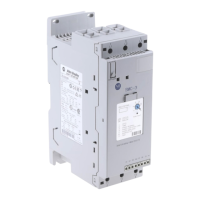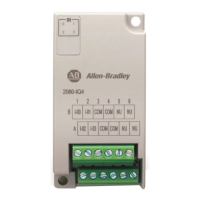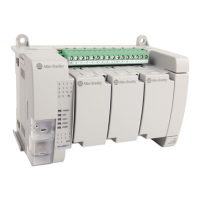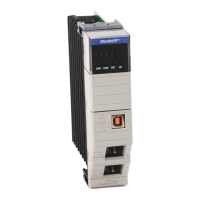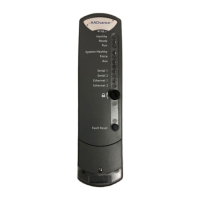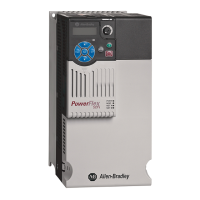3-4 Commissioning Procedures
1560D-UM051D-EN-P – February 2005
Hi-Pot and Megger Test It is recommended that insulation levels be checked before energizing
power equipment. This may be done with a High Voltage AC insulation
tester (HI-POT) or a Megger. See Publication 1502-5.0 for suggested HI-POT
testers, and for test procedures for vacuum contactors. If using a Megger,
a 5000 volt type is recommended.
Solid-state devices can be destroyed by high voltage.
Use jumper wires between heatsinks to short out the
SCRs before applying high test voltages to the power
circuit. Disconnect the white wires (1L1, 1T1, 1L2,
1T2, 1L3, 1T3) from the voltage feedback board and
remove the plug connector. On the 1562D, 360A, the
voltage feedback board is located on the back of the low
voltage panel; on the 1560D, 360A/600A, the voltage
feedback board is located on the left side of the structure.
If voltage transformers are present, remove one primary
fuse from each device. On the 1503D, consult OEM
documentation for location of voltage feedback board
Use caution when performing the HI-POT or Megger Test.
High voltage testing is potentially hazardous and may cause
severe burns, injury or death. Where appropriate, the case
of the test equipment should be connected to ground.
Insulation may be tested from phase to phase and phase to ground. The
recommended level for AC HI-POT testing is (2 X V
LL
) Volts, where V
LL
is the rated line-to-line voltage of the power system. The leakage current
may be recorded for future comparison testing, and must be less than 20 mA.
If a Megger is used, it should indicate 50 k megohms or greater if it is
isolated as explained in the next paragraph. If the motor is connected, the
Megger should indicate 5 k megohms or greater.
If a 1560D is being tested, it is recommended that the input and output
cables be disconnected for each phase. If a 1562D is being tested, it is
recommended that the main contactor be in the open position, and that the
output cables be disconnected for each phase. (See points marked with an
asterisk * in Figure 1.17, page 1-19.) This will ensure the unit is isolated from
the line and the motor. The line and the motor may be tested separately to
locate problem areas. If a 1503D is being tested, consult OEM documentation.
After completing the test, remove all semiconductor jumpers and test the
devices with a multimeter to ensure no damage has occurred from the
insulation test. Reconnect the system as it existed prior to this section.
Perform the power supply and resistance checks in the following sections.
Failure to reconnect all wires and cables correctly may
result in equipment damage, personal injury or death.
A T T E N T I O NA T T E N T I O N
A T T E N T I O NA T T E N T I O N
A T T E N T I O NA T T E N T I O N

